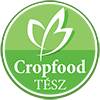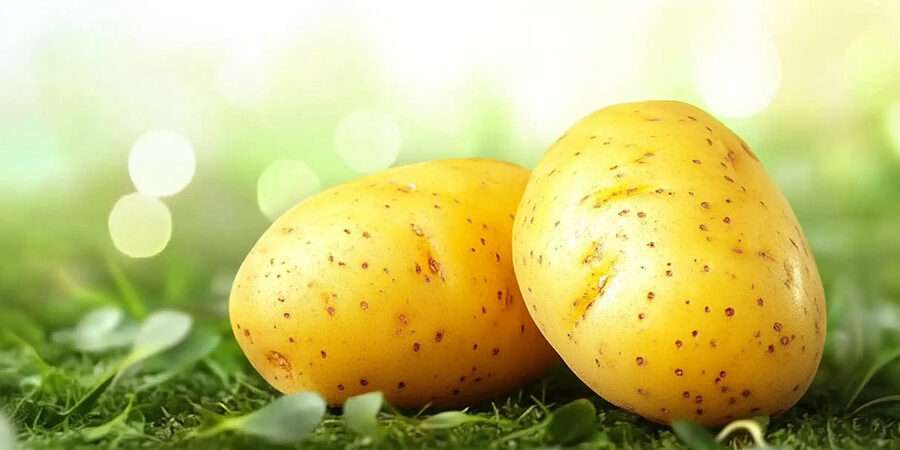With the support of our stable Hungarian producer base, this vegetable is always available in high quality in our wholesale assortment – ask us for an offer!
Yellow potatoes are one of the most popular and versatile vegetables in Europe. The adjective ‘yellow’ refers to the colour of the skin or flesh, and usually indicates a more delicate, buttery flavour than white or red flesh potatoes. Yellow potatoes include several well-known varieties such as Yukon Gold and Agria.
The potato originated in South America and arrived in Europe in the 16th century. Since then, it has become a staple food because it is nutrient-rich, easy to store and highly versatile. The yellow-fleshed varieties have become particularly popular as they have a creamy texture and a slightly sweet, rich flavour when cooked.
From a health perspective, yellow potatoes are a good source of vitamin C, vitamin B6, potassium and fibre. Its high carbohydrate content provides energy, but when cooked in its skin and prepared in a low-fat way, it can be a very healthy side dish.
Economically, potatoes are one of the most important vegetable crops in Europe. Germany, France, the Netherlands and Poland are among the leading producing countries. Demand for yellow-fleshed varieties has increased particularly in recent decades as the gastronomy sector increasingly discovers their taste and texture benefits.
Specificities of its production
Yellow potatoes are grown in the open field, mainly by spring planting. The crop does not require greenhouse cultivation as it is cold tolerant, but a balanced water supply and good soil structure are important for yields.
It is one of the largest potato producers in Europe:
- Germany
- France
- Poland
- Netherlands
Potato production is also significant in Hungary, especially in Szabolcs-Szatmár-Bereg and Heves counties. Hungarian yellow potatoes typically appear in shops from the end of June to mid-September, in the form of fresh “new potatoes”, and are also available in stored form later.
Since October, we have seen an increase in imported yellow potatoes, mainly from France and the Netherlands.
How to choose good quality yellow potatoes?
When buying, you should consider the following points:
- The skin should be smooth, clean and free from damage.
- Avoid green spots – these could indicate solanine, which can be toxic in large quantities.
- Avoid wilted, wrinkled tubers – they have lost a lot of their water content.
- Thin skin and firm, springy texture are the best signs of fresh, tender specimens.
The skin colour can be light yellow or brownish depending on the variety, but always choose potatoes that are uniform in colour and firm to the touch.
How to use yellow potatoes in the kitchen?
Yellow potatoes are one of the most versatile ingredients in Hungarian and international cuisine. Its creamy texture and slightly buttery taste make it particularly suitable:
- For mashes – gives a finer texture than white potatoes
- For frying – withstands heat well, crispy on the outside, soft on the inside
- For cooking – provides a silky texture
- For soups – keeps its shape well
- For casseroles, gratin, or even gnocchi
Simply cooked and served with a little butter and parsley, it can also be an excellent side dish with meat.
How to store after purchase?
The aim of storing potatoes is to preserve their freshness, texture and flavour for as long as possible. To do this, the following advice should be followed:
- Keep in a cool, dark place (between 4-10 °C)
- Avoid sunlight as it can lead to greening and the formation of solanine
- Do not refrigerate, as it may develop a sweet taste due to the starch turning into sugar
- Keep in a breathable bag or crate, not a plastic bag
- Regularly inspect and remove any wilted or sprouting specimens
If stored properly, they will keep for several months, especially late varieties intended for storage.
Interesting facts about yellow potatoes
- Yellow-fleshed potatoes contain natural carotenoids, which have antioxidant properties.
- The Yukon Gold variety is one of the best-known yellow potatoes and has become a national crop in Canada.
- Although technically a vegetable, nutritionally it is often classified as a starchy side dish.
- There are more than 4,000 different varieties of potatoes in the world – some of them with yellow flesh.
Tips for using yellow potatoes in the kitchen
- Don’t peel them before cooking, just wash them thoroughly – this preserves more of the nutrients.
- If you want to peel it, keep it in cold water for a short time until you are ready to use it, so that it does not brown.
- Use little fat, as yellow potatoes are naturally rich in flavour and do not require much seasoning.
- For purees, mix with a little cream or butter to achieve a particularly creamy consistency.
- Try it cold: it’s great for salads, as it keeps its shape well after cooking.


